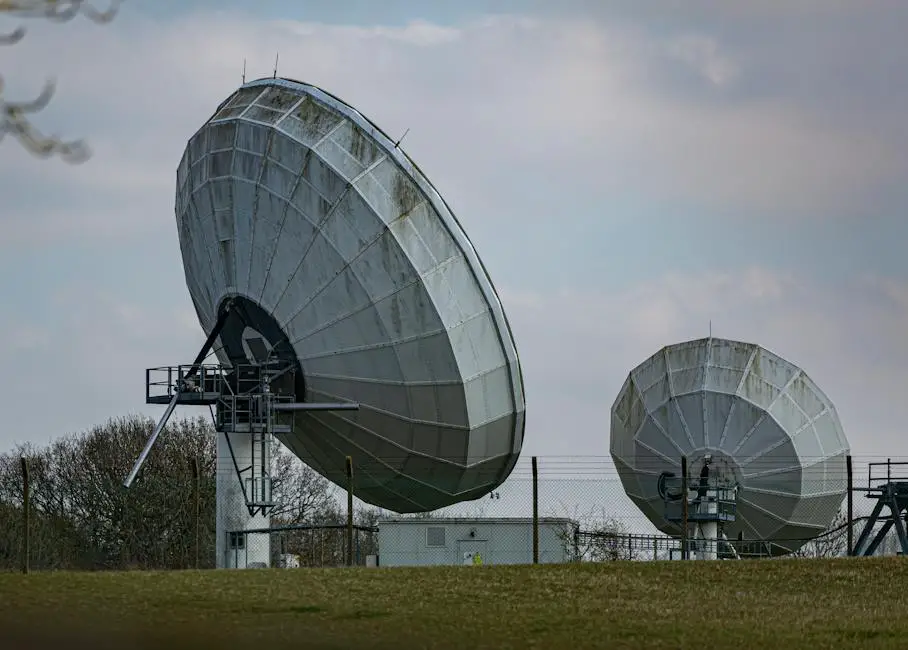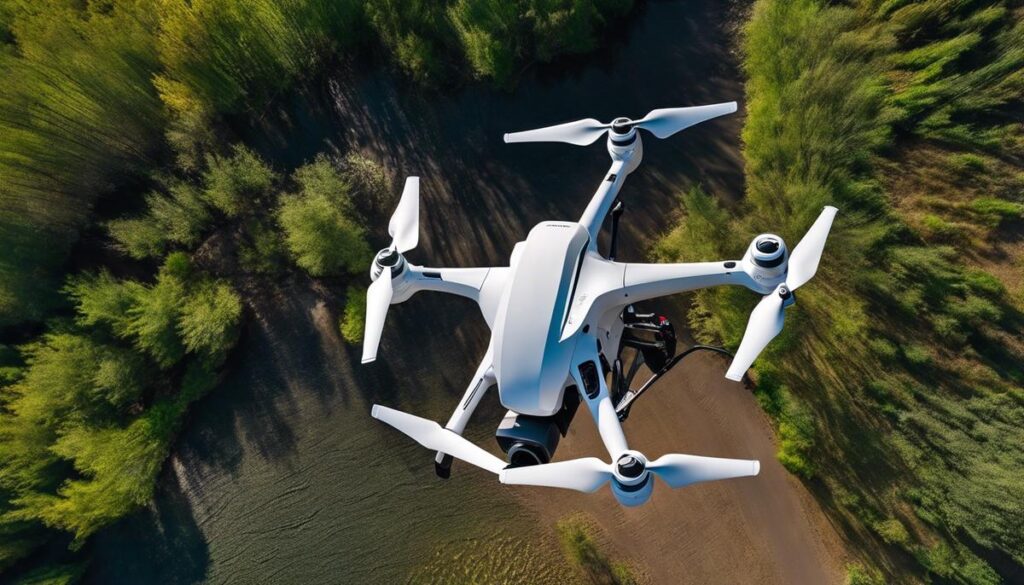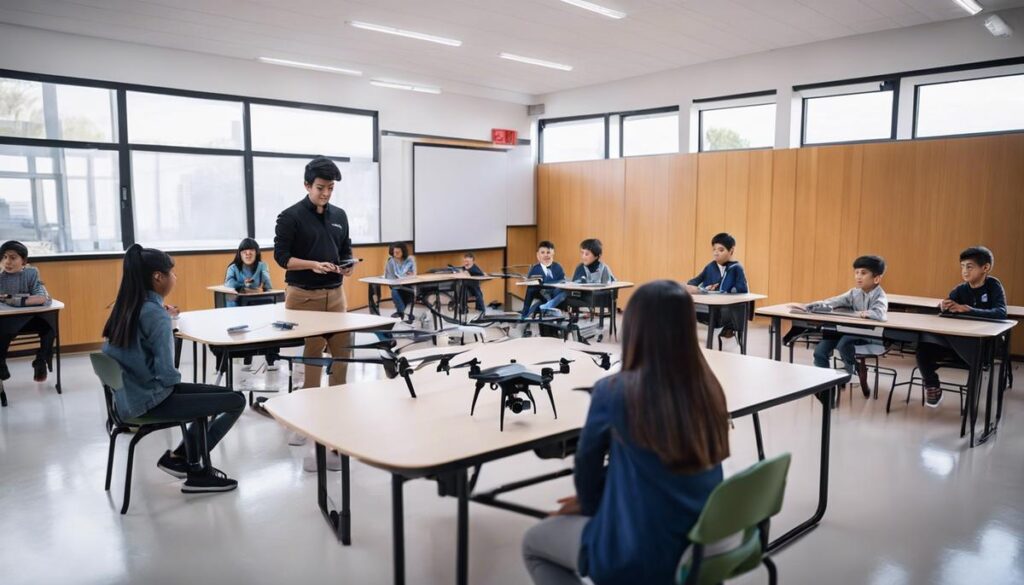Flying an FPV drone isn’t just about the thrill of the flight or the acrobatics that you can perform in the air; it hinges on how effectively you can see the world through the drone’s eyes. At the heart of this immersive experience lies the FPV video transmitter (VTX), a piece of technology that can make or break your aerial journey. Understanding the complex dance of frequencies, bandwidths, and power levels is essential for every enthusiast looking to conquer the skies with precision and clarity. With this essay, we dive into the nuanced world of FPV video transmitters, unpacking everything from the basics to the intricacies of choosing, installing, and perfecting your VTX setup for a seamless flight every time.
Basics of FPV Video Transmitters
Welcome to the high-flying world of FPV (First-Person View) drones! If buzzing through the skies as if sitting in the cockpit of a mini aircraft sounds like a blast, that’s because it is! But hold on, before taking off into the wild blue yonder, it’s essential to understand one of the primary gears in the FPV setup – the video transmitter (VTx).
So, what’s a VTx? It’s a little gadget that takes the video captured by a drone’s camera and sends it to a pair of goggles or a screen on the ground. This live feed lets the pilot see what the drone sees, in real-time. Without a good video transmitter, flying FPV would be like flying blind – and that’s no fun at all!
The power of a VTx is measured in milliwatts (mW), and it varies. A higher mW number means the VTx can send the video signal further and clearer. But watch out – a more powerful transmitter can generate more heat and might require a permit depending on where you live.
Choosing the right VTx is crucial. It needs to match the frequency of the receiver and be compatible with the goggles or monitor. Most pilots go for the popular 5.8 GHz band because it strikes a perfect balance between range and image quality.
One cool feature to look out for is a smart audio function. This lets pilots control the VTx settings directly from their controller, flipping through channels or adjusting power without touching the drone. Pretty handy when you’re itching to fly and don’t want to fiddle with tiny buttons.
Remember, always keep an eye on the legal side of things like transmission power limits and frequencies allowed in your area. Breaking these rules can get you in unnecessary trouble.
So, why does a good VTx matter? It’s simple – clarity and range. The better the transmitter, the clearer and further you can fly. It stands between a smooth, immersive experience and a static-filled frustration.
Got your VTx sorted out? Great! Get ready to race through gates, skim over trees, and dive down buildings with the kind of thrilling perspective only FPV can provide. Happy flying!

Choosing the Right FPV VTX
So, you’re knee-deep in the exhilarating world of FPV drones and looking to upgrade your video transmitter (VTx). Brilliant! Your choice of VTx can really make or break your flying experience. But don’t fret – navigating through the jargon and specs to find your perfect VTx wingman is easier than acing a barrel roll in high winds.
Let’s talk channels and bands. Most VTx devices come replete with a variety of channels – the more, the better. A good VTx should offer you a broad spectrum of channels within the legal bands of operation. This wealth of channels ensures you’ll find a clear frequency, even in areas more crowded than a mid-summer drone jamboree.
Antenna connectors are your friend. You’ll stumble across terms like SMA and RP-SMA. What’s crucial is that your antenna and VTx connectors match. Remember that little detail, and that’s one less hurdle in your piloting pursuits.
What about wattage? Sure, more power often means a stronger signal, but it also gulps down battery life quicker than a thirsty marathon runner. A switchable VTx is your golden ticket here, allowing you to adjust the output based on necessity—race day or a lazy fly in the park, adaptability for the win.
Integrated features are the spice of life in the world of VTx. Does the prospective VTx support OSD (On Screen Display) integration? That’s where your flight data gets overlaid on your video feed – quite the nifty trick. Look for VTx units that make the marriage of technology a seamless affair.
Consider range and resilience. If you aim to soar far and wide, a robust VTx with an admirable range keeps you connected to your drone. No one enjoys the game of “Find the Lost Drone.” Also, a durable build will save your skin when your UAV decides to take an unplanned tumble through the bushes.
Compatibility is key. Before getting too chummy with a VTx model, confirm that it’s compatible with your goggles or display setup. It’s the equivalent of ensuring the puzzle pieces fit – pretty important, right? This step saves you from the dreaded “back to the drawing board” situation.
Let’s not forget about the weight. Drones are all about the delicate balance of power and poise. A bulky VTx will weigh down your dreams of balletic aerial maneuvers. Go for something lightweight but powerful – it’s the best of both worlds.
Finally, pin down that price-performance ratio. Drones and their accessories can add up to a pretty penny. You deserve a VTx that gives you the most bang for your buck without compromising the quality of your FPV experience.
Remember, the right VTx can elevate your FPV flying from merely great to truly spectacular. So, gear up, choose wisely, and get ready to witness your FPV drone experience transform with the perfect video transmitter. Happy flying!

Installation and Troubleshooting
Ready to get your FPV drone’s video transmitter up and flying? Roll up your sleeves; it’s time to install and troubleshoot that crucial piece of gear, the VTx, which beams the video from your drone’s camera to your goggles or display in real time.
Before diving into installation, remember that a VTx needs a clean power source to avoid video signal interference. This generally means using a filtered power supply or a dedicated voltage regulator. Now grab your tools; we’re going in!
Step one is to connect your VTx to the camera. This usually involves a simple wire-to-wire connection; match each wire to its partner by color or follow the labeling. Next, you’ll need to solder the power leads to your VTx, and if it’s not a plug and play model, you might need to solder on your own connector. Always double-check the polarity – a backwards connection can fry your VTx.
Antenna time! Make sure you’re screwing the antenna onto the correct connector and that the types match; otherwise, you might damage the VTx or end up with poor signal transmission. For most setups, you’ll be using an SMA or RP-SMA connector.
All connected? Power on the drone (with the antenna attached – powering up without an antenna can damage your VTx), and let’s talk settings. If your VTx supports smart audio, you can tune channels and power settings straight from your OSD – that’s on-screen display for the rookies in the back. Otherwise, you’ll be using buttons or switches directly on the VTx to ensure you’re on the right frequency.
Troubles with the video feed? Here’s a quick checklist to troubleshoot:
- Snowy or weak signal: Double-check your antenna connections and ensure you’re on the correct frequency for your goggles or monitor.
- Rolling lines or interference: This could point to a power issue. Ensure your VTx has a clean power source or add filtration.
- No signal at all: Re-examine your wire connections and soldering points. Also, check if the VTx is properly powered and that you haven’t overheated it during installation.
- Overheating: VTx can get hot; make sure it’s well-ventilated and not touching any parts of the drone frame that can melt. If it’s still too hot, consider adding a heat sink or checking for settings that reduce power output and heat.
Installing and maintaining an FPV video transmitter is part science, part art. With each flight and adjustment, the nuances of VTx tech become clearer. If issues pop up, take it as an opportunity to learn more about this fascinating hobby. Who knows, you might be the one giving advice on video transmitters at the next race or meetup! Keep flying, keep learning, and always remember – a clear view from the sky is a joy that keeps on giving. Happy flying!

Regulations and Safe Flying
Flying a drone with First-Person View (FPV) can feel like strapping on wings and seeing the world from a bird’s eye view. To keep that experience amazing, and legal, it’s crucial to know the rules and safety tips for using video transmitters (VTx).
In the United States, the Federal Communications Commission (FCC) sets out the regulations for airwaves use, including those for FPV flying. Hobbyists must be sure their VTx does not interfere with other signals, especially since they’re sharing airwaves with lots of different users, including emergency services.
One big rule is to avoid transmitting on a frequency not authorized for air-based transmission. Most FPV pilots rely on the 5.8 GHz band, which is legal and widely used. Additionally, for most FPV flyers, the FCC requires pilots to have an amateur radio (ham) license to operate on these bands with the power levels desired.
Power levels are super important too. The FCC puts limits on how powerful signals can be to prevent interference. When choosing a VTx, it’s essential to know its milliwatt (mW) rating, and make sure it aligns with these rules. Many VTx units have adjustable output power, which can help stay within legal limits and reduce the risk of interference with other pilots.
Safety-wise, it’s all about respect and caution. Fly in open areas away from people and private property. Make sure to have a spotter – that’s a person who keeps an eye on the drone from the ground to help avoid collisions. And before hitting the skies, check the weather. Not just for rain or snow, but also for interference, as some conditions can mess with signals.
Knowing the local rules is just as important. Some places have specific laws about where and how high drones can fly. Keeping it safe and legal means checking with local authorities or flying clubs for the scoop on what’s okay and what’s not.
Lastly, all this tech and regulations might seem like a lot, but shouldn’t discourage anyone. The FPV community is full of folks who love to help beginners. There’s always someone willing to explain a tricky rule or suggest the perfect VTx for a certain drone. Plus, there’s loads of information online, from forums to instructional videos.
Remember, keeping the hobby safe and within the law keeps it fun for everyone. With the right gear and knowledge, anyone can have an epic time soaring the skies with FPV.

Advanced VTX Features
Antenna Polarization and Your FPV Experience
When diving into the wonderful world of FPV flying, hobbyists soon discover there is more to the hobby than just getting airborne. To push the FPV experience further, understanding antenna polarization is crucial for a clear, stable video feed. But what exactly is antenna polarization, and why does it matter?
Think of polarization as the orientation of the waves your antennas send and receive. There are mainly two types: linear and circular. Linear antennas are simpler and might come as default with many setups. However, when it comes to flying around objects or in environments with potential signal reflection, circular polarized antennas are the heroes. Why? They are less prone to signal degradation caused by bouncing off surfaces.
Here’s a top tip: match the polarization of your antennas on both the drone and your FPV goggles or ground station. If you mix them up, like pairing a linear antenna with a circular polarized one, you’ll probably watch your video signal quality drop drastically. Stick to the same type for both transmitter and receiver to maintain a solid connection.
But that’s not where the story ends. Circular polarized antennas come in two versions too, known as right-hand circular polarization (RHCP) and left-hand circular polarization (LHCP). For the solo flyer, either works great, but when you’re flying with friends, make sure each pilot uses a different polarization to reduce video feed interference between drones. It’s like being at a party; you don’t want everyone talking at the same time, right?
Last but not least, antenna placement plays a big role in avoiding signal blockage. Keep the antennas on your FPV drone away from other electronic components that might shield the signal. A good rule of thumb? Mount them high and with as much clear space around as possible.
Understanding and optimizing antenna polarization can significantly elevate your FPV flying experience. Clear skies and happy flying!

The art of FPV drone piloting is continuously evolving, pushed forward by innovative technologies and the undying passion of hobbyists around the globe. Mastering your video transmitter setup is a never-ending journey, peppered with challenges and learning opportunities that enhance your flying experience. By acknowledging regulations, embracing safe flying practices, and delving into advanced VTX features, you can push the boundaries of what seemed possible, taking to the skies with confidence and control. Fly responsibly, explore the uncharted, and let every flight be a testament to the marvels of FPV technology and the spirit of the drone community.




